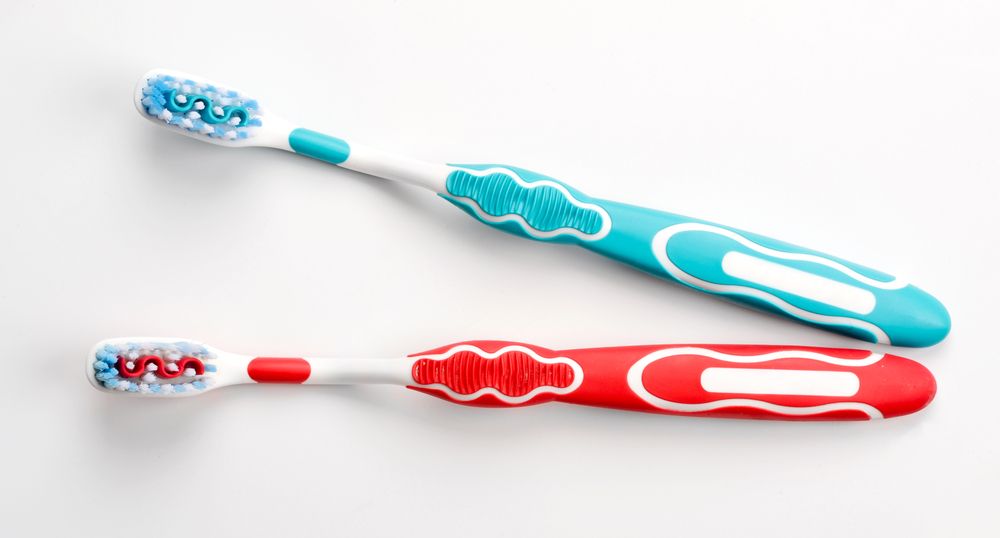We rely heavily on toothbrushes to complete dental care, but do you know your toothbrush? Although we often use toothbrushes, most of us know very little about this gadget. Toothbrushes were only born two or three hundred years ago, but it has helped us resist many oral diseases.
Introduce some interesting knowledge about toothbrushes, which you may never know before.
1. The ancients used small branches to clean their teeth. The first modern toothbrush was made of wild boar hair.
The history of brushing can be traced back to about 4000 BC when Hindus first used branches to grind into fibers to clean their teeth. About 3500 AD, the Babylonians, and Egyptians used tooth sticks to brush their teeth, fraying the ends of the tooth sticks. The Romans and Greeks also used branches and leave to clean their teeth. About 1600 AD, Chinese people cleaned their teeth and freshened their breath by chewing on fragrant tree twigs.
In the 15th century, the Chinese fixed wild boar hair on bones or bamboo handles and invented the first natural boar bristle toothbrush. In England in 1780, a man named William Eddie invented the first modern-style toothbrush using wild boar hair and bones in prison. After leaving the prison, he mass-produced this toothbrush and made a fortune. It was not until the invention of nylon in 1938 that the history of making toothbrushes with animal hair ended.
2. The United States began mass production after a century of mass production of toothbrushes in the United Kingdom
The United Kingdom began mass production of toothbrushes in the 1780s, and the United States also began producing toothbrushes only a century later. The United States now consumes an average of 25,000 tons of toothbrushes each year, about 8.5 million U.S. dollars. Currently, only 3.5 billion people use toothbrushes, but 4 billion people have mobile phones.
3. Electric toothbrushes are better than manual toothbrushes
From wild boar hair toothbrushes to super modern electric toothbrushes, toothbrushes have experienced a long development process. The first electric toothbrush was produced by Bristol-Myers Squibb in 1956 in Europe. In 1960, the United States produced the first electric toothbrush “Broxodent”.
Now there are electric toothbrushes of various styles and various prices on the market, and oral care has also ushered in a new era. Dentists prefer to use electric toothbrushes instead of manual toothbrushes because electric toothbrushes rotate more times per minute, which is far more effective than manual toothbrushing in removing plaque and food debris. Experiments have shown that the best electric toothbrushes on the market can remove 11% more plaque than manual toothbrushes. Manpower is not as good as electricity.
4. Soft-bristled toothbrushes are better than hard-bristled toothbrushes
A quick-thinking person might say that a hard-bristled toothbrush is more effective for cleaning teeth, and a soft-bristled toothbrush can protect the delicate gums. However, teeth need protection just like gums, and why don’t you think about it?
A soft toothbrush can also clean teeth as well as a hard toothbrush, but a hard toothbrush may damage the gums and cause gum recession.
5. Toothbrushes need to be replaced frequently
Once the toothbrush shows signs of wear, it should be replaced in time. A deformed or worn toothbrush is not as effective as a new toothbrush in cleaning the gums. Therefore, the toothbrush needs to be replaced every 2-3 months, if it is after illness or if there is any deformation or wear, it should be replaced immediately.
If you have gingivitis, your dentist recommends replacing your toothbrush every 3-4 weeks. Never use the same toothbrush all year round because of being stingy, it may cause serious oral diseases in the future.
6. The toothbrush should be kept away from the toilet. Using a toothbrush cover will cause bacteria to grow
The toothbrush should be placed at least 6 feet away from the toilet to ensure that bacteria will not spread to the toothbrush when flushing the toilet, so the toilet lid should be covered when flushing.
A wet toothbrush is a breeding ground for billions of microorganisms, so putting a toothbrush cover on a toothbrush is a bad idea because it provides a moist environment that is conducive to the growth of microorganisms. Almost every once in a while, toothbrushes need to be rinsed and disinfected with an antibacterial solution. In addition, the toothbrushes should not be in contact with each other to avoid the spread of bacteria from one toothbrush to another.
7. Cleaning the tongue with a toothbrush is as effective as cleaning the gums
Maybe you haven’t done this before, but a toothbrush is as effective in cleaning your tongue as it cleans your gums, so you don’t need to find other tools to clean your tongue.
The most popular toothbrush color is blue
The toothbrush you are using now is likely blue, because blue is the most popular toothbrush color, followed by red.

